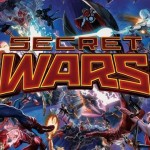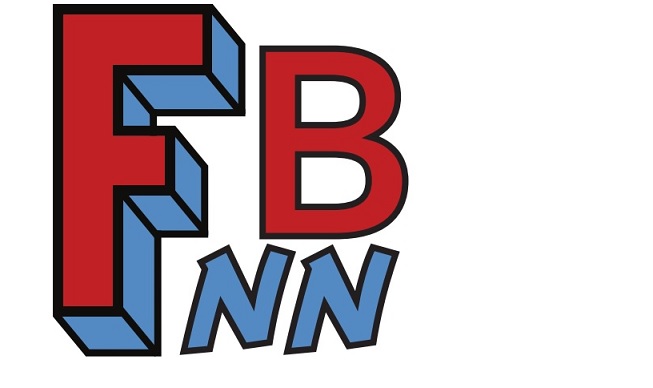 Continuity in comics is both a blessing and a curse. On one hand, it allows the creation of a complex universe of interrelated characters and epic storytelling; on the other hand, it means that new readers may not fully understand aspects of a story that has years of background across many titles feeding into it. And in modern comic continuity we have to deal with canon, with some older stories having been removed from continuity.
Continuity in comics is both a blessing and a curse. On one hand, it allows the creation of a complex universe of interrelated characters and epic storytelling; on the other hand, it means that new readers may not fully understand aspects of a story that has years of background across many titles feeding into it. And in modern comic continuity we have to deal with canon, with some older stories having been removed from continuity.
Before looking at why this is relevant right now, I want to cover a bit of history. Continuity in comics is hardly new. In the early 1940s, Timely comics had its hero (the Human Torch) battle its anti-hero (the Sub-Mariner), each of whom had their own ongoing series. At the same time, DC comics had several of its heroes team up as the Justice Society of America. Almost every comic company had team ups with its various characters. Back in these early days keeping track of continuity wasn’t a priority, so there were often inconsistencies resulting from these stories and they rarely had any lasting impact on the character’s individual titles. This wasn’t a big deal, especially with the waning of superhero comics in the years post World War II.
But it became a very big deal after the birth of the Silver Age of comics in 1956, with DC comics introducing new versions of their characters with different origins and identities. This meant, at the time, that the Golden Age stories were no longer part of the DC continuity. And then DC decided to up the ante by introducing the concept of a multiverse, in 1961, with the story Flash of Two Worlds where the Golden age Flash met the Silver Age Flash who had accidently entered the first Flash’s reality. Suddenly, you had the potential for stories for characters from both eras. These led to dividing up which stories belonged on Earth 1 (The Silver Age Earth) and Earth 2 (The Golden Age Earth). In general this was easy as anything prior to 1956 belonging to Earth 2. But the wrinkle was that there were a few characters that were the same across both Earths as they were the handful that had never gone out of publication, those being Superman, Batman, Wonder Woman, Aquaman, and Green Arrow. In general the 1956 cut off was used for them as well, with the idea that some stories counted for both, without a lot of concern as to what those were.
Over the years stories were told that on some level clarified the histories, but nothing was comprehensive. Another factor that played into the continuity issue was the static nature of the characters. Most superheroes were presented as being in their mid to late twenties. That meant that in the 1960s you had Superman stories where he met President Kennedy. Years later there would be a Superboy story, back when they were all flashback stories of Superman’s youth, where he met President Kennedy. Things of that nature were usually just hand-waved. In fact, the only characters that aged at all were the teens. Spider-man was introduced as a high school student in 1962. Flash forward to the mid-1980s and he was a college student. Similar aging happened to Robin and Kid Flash over at DC. But that was it for character aging. If there was an update to a character, it was usually handled as a reveal of previously unknown information.
One of the best known of this type was in 1984, when Alan Moore wrote the Swamp Thing Story Anatomy Lesson where he revealed that Swamp Thing was not Alec Holland, a scientist transformed into a plant monster, but instead a plant creature that had absorbed memories from Holland’s corpse as part of its creation. The story was ground breaking, and is still considered the best example of a soft reboot, where the previous continuity is not altered in any way.
In 1985 DC released the ground breaking 12 issue series Crisis on Infinite Earths, which was the first full out reboot of a comic book’s continuity. In it DC merged Earth 1 and Earth 2, as well as other alternate Earths that contained characters DC had purchased from other companies (such as Fawcett and Charleston) creating a single Earth with one history. The stated purpose was to make a cohesive history and create an easy entry point for new readers who were being drawn in by books like Swamp Thing and The Dark Knight Returns.
Over all Crisis was a success, but there were some snafus in the backstories of some characters (especially Hawkman and Donna Troy) that led to several rewrites, which in Donna’s case were ok, and in Hawkman’s case just made things worse. Eventually DC had two different series that tried to do patching rewrites to clear these issues up, Zero Hour, and Infinite Crisis. Both had mixed success at best.
Over at Marvel they decided not to go the full reboot route, stating that they had gotten their universe right the first time. Not that they didn’t like to play with the continuity idea. They have a series, which has come and gone a few times, called What IF. In it the Watcher looks at different universes in which the Marvel characters have made different choices; it’s basically a chance to look at stories Marvel wrote in the past to see what would have happened, had they gone down a different path.
On a more official level they tried some different routes to make clean entry continuities for new readers. The first of these was the poorly received Heroes Reborn, where the Avengers were sent to a new Universe where their histories were rewritten (the basic idea was sound, it was just really badly written – where all the stereotypes of bad 90s comics writing got codified).
A few years after that failed experiment Marvel created the Ultimate Universe. This was a separate continuity from the main Marvel Universe that allowed them to do new stories for the Marvel heroes without the baggage of the old continuity. Overall this was a success, as the old universe was also still going on so the fans didn’t feel a sense of loss and could enjoy the new stories as their own thing. Part of the significance of the Ultimate Universe is that years later, when Marvel studios came into being and created the Marvel Cinematic Universe, they cherry picked the best elements of both the old Universe and the Ultimate Universe to make their stories.
As for the movies, a lot of people attribute the MCU success to that fact that it has continuity between all of its films, just like the comics. Some say it is a throw-back to the old movie serials. This has led other studios to try and create their own mega-franchises, such as Universal attempting new Universal Monster movies with this type of continuity.
But not all was well with Marvel continuity. Marvel was not above tweaking characters with various soft reboots. None are more infamous then the reboot of Spider-man’s continuity in the story One More Day, where Peter made a deal with a demon to save Aunt May, but at the cost of having his marriage erased from history; this remains a hot button topic for many fans.
In more recent years DC did another reboot (which I have written about a lot) called Flashpoint which lead to The New 52. Here I will simply reiterate that it was a hastily thrown together reboot designed as a means to drawn attention to DC comics (who were getting crushed in sales by Marvel). It has been a complete mess and divided fans nearly as bad as Heroes Reborn did.
And that leads us to now.
Both DC and Marvel have events going on that are pulling deep on their continuities. Over at DC is Convergence. This is a two month event that will be replacing DC’s entire line of comics for its duration, that will cover the gap created by DC moving their staff and offices from New York to California. It will feature characters from different DC continuities, such as the pre-Flashpoint universe and DC’s various Elseworlds (their answer to What If). This has fans wondering if this will lead to a more permanent return of the pre-Flashpoint universe, which fans have been asking for since it became clear that The New 52 was a mess. Marvel is doing an event called Secret Wars nameds after an event they had in the 1980s. This series has apparently been in the works for three years and will apparently lead to a new Marvel continuity that combines the old Marvel Universe with the Ultimate Universe (remember how I said that the Cinematic Universe was a combination of the two). There is a lot of speculation that this is an attempt to bring the comics more in line with the movies, and therefore an easier entry point for fans who are picking up the comics because of the movies. There is also hope that it will clear up missteps such as One More Day.
No matter which way you slice it, continuity is a big deal in comics, and will fuel fan debate in all corners of comic culture.



